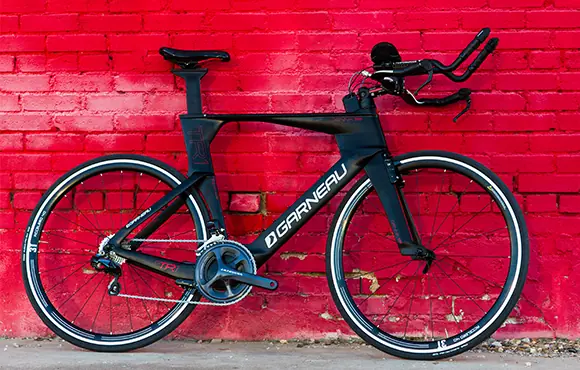But just because it makes a lot of sense on race day doesn't mean it should be the only bike you own or train on. In fact, you'll become a better, faster triathlete if you do some of your training on a road bike instead.
Here's why.
1. It'll Add Variety to Your Rides
1 of 6
Yes, threshold intervals and rides aimed to develop comfort and power from the time trial position will still need to be done on your triathlon bike. But for these efforts, you'll need to choose long, flat roads without a lot of technical turns or climbs. Why? Because riding up hills or on roads that require a lot of stopping will force you out of the aerobar position and use your brakes. And if you're out of your aerobars, a triathlon bike isn't doing you much good.
By opting for a road bike instead, you'll be able to mix up your training by varying the terrain. Routes that are technical or which feature long ascents and descents will improve your bike handling ability and keep you from riding the same few routes constantly. By mixing up how and where you ride, you will force your body to adapt. This variation is what can ultimately help you produce a faster bike split.
2. Training Partners Will Be Easier to Find
2 of 6
Logging a lot of miles alone out on the ride can be difficult, and as the season wears on, motivation can begin to wane. While riding with a partner on your triathlon bike isn't impossible, you'll be much more comfortable and safer on a road bike. And if you opt for a weekend group ride, riding on a dedicated tri bike is usually not allowed--especially if you plan to use your aerobars.
By adding a road bike to your arsenal, it'll make it much easier to find other cyclists you can train with and use for motivation. This will make things much easier when the thought of heading out for another long ride alone begins to feel like a burden.
3. You'll Improve Your Climbing
3 of 6
Even if you don't plan to do a triathlon with a hilly bike course, tackling climbs during training can make you faster on the bike. And the endurance benefits you receive could boost swim and run performances, too.
While laboring up a climb, using big gears on a heavy tri bike in the forward position might not be a lot of fun, but doing so on a road bike will make your attempts much more realistic. You'll be more comfortable, utilize more muscle groups from the change in saddle position, and be able to stand during steep gradients much more effectively. This will allow you to increase the length of your climbs and help you find a climbing rhythm--which can be difficult otherwise. On the way down, you'll find that a road bike is much easier to handle around those hairpin bends.
4. More Options on Race Day
4 of 6
Believe it or not, a time trial bike isn't always your best choice for a race. For courses that are technical or feature long climbs, you're probably better off with a road bike and clip-on aerobars depending on your ability and skill level.
If you plan to compete in a lot of different types of triathlons, instead of purchasing one really expensive triathlon bike, it might be a better idea to purchase a mid-range tri bike instead. This will allow you to use the leftover funds to purchase a decent road bike too, which will open up your options on race day.
5. Commuting Will Be More Realistic
5 of 6
It's no secret that it can be hard to find the time to train for a triathlon, and one way to get in your cycling miles is to commute to and from work. While this isn't impossible on a tri bike, installing a rack or wearing a backpack in an aero position isn't very realistic.
You'll also have to think about dealing with an increase in traffic on the road during peak hours, which will require a decent amount of stop and go. The slightly more upright position, better handling, and increased safety from your hand being near the brake levers makes using a road bike a better alternative. And if you ever want ride a century or Gran Fondo event, you'll already have all the equipment you need.







Discuss This Article